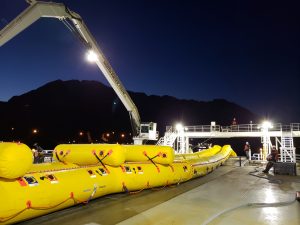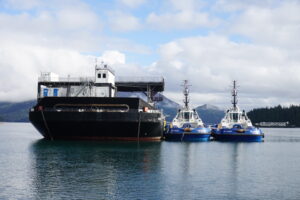
In February, the Council reached an agreement with Alyeska that will improve knowledge about weather conditions in Port Valdez. Alyeska has agreed to allow a buoy to be installed in front of the Valdez Marine Terminal to measure winds and surface currents. A second buoy will collect data from a nearby salt marsh.
Agreement reached on appeal to amendment of spill contingency plan
The agreement is the outcome of an appeal to a 2017 amendment to the oil spill contingency plan for the terminal.
In that 2017 amendment, Alyeska replaced a tool used by responders in deciding whether to protect the salt marsh known as the Valdez Duck Flats, and the Solomon Gulch Fish Hatchery in case of a spill from the terminal. The Council, the City of Valdez, the Valdez Fisheries Development Association, and the Prince William Sound Aquaculture Corporation appealed the 2017 change. They were concerned the new tool would not adequately protect these two environmentally sensitive areas.

